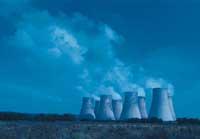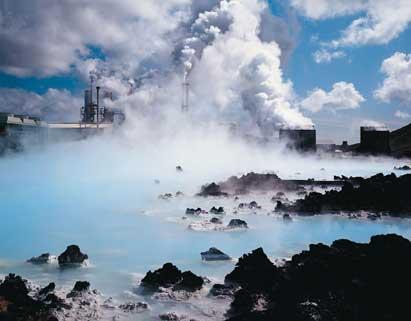The most expensive gas bill
2001/04/05 Carton Virto, Eider - Elhuyar Zientzia

The Kyoto Protocol is debated in recent days. Since the George Bush administration acknowledged that it will not comply with the agreements there agreed, the world has become very angry. However, it remains to be seen whether the European Union will ratify
the Kyoto Protocol and will begin to support reductions in gas emissions. Although it is not logical, several European states have increased their emissions in these four years, including Spain. That is, the accounts are prepared for the whole of the European Union and then it is determined how much each one should reduce depending on the population and characteristics of each State. According to these calculations, States can increase their emissions.
To say that we must stop emitting greenhouse gases is another thing and define how and when they should be reduced in the spill. And as always, in this second step everything is blocked. The subject of a study published today in the journal Nature is that accounts are fundamental. Two researchers from the California Institute of Electric Energy and Stanford University have calculated the costs of limiting and reducing gas emissions. Very expensive.
Not everything is carbon dioxide
The Kyoto Protocol approved an X% reduction in carbon dioxide emissions by each state, but reductions can be direct or indirect. One option is to control emissions from other non-carbon dioxide gases and account for these reductions in carbon dioxide. To do this, normalization factors were calculated according to the duration of each gas in the atmosphere and the warming of the planet. The amount of carbon dioxide equivalent to methane or nitrogen oxide is then calculated.

Both researchers have carried out an economic research on this equivalence in order to put a price on the discharges. They have set a level of sustainable warming and have verified, through a computer model that simulates heating based on discharges, how prices per ton and type of gas emitted as the limit is reached vary over time. That is, what kind of pouring is done and when it is done, it is not the same. For example, the emission of a gas that stays in the atmosphere for a long time near the limit is more expensive than the emission in areas far from the limit. On the contrary, the equivalence models applied by the United Nations Climate Change Group (IPCC) indicate that prices would be fixed over time. According to these two researchers, the determination of this sustainable temperature limit is essential if you want to calculate costs with minimal precision, since they vary greatly within the limit.
This type of research seems ridiculous these days when the fear of the Kyoto Protocol being annulled, but they are fine to realize the complexity of the issue.

Gai honi buruzko eduki gehiago
Elhuyarrek garatutako teknologia





